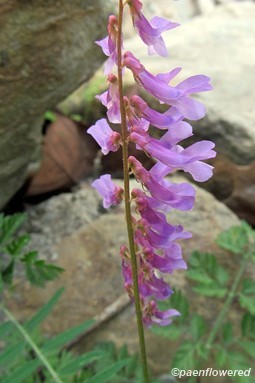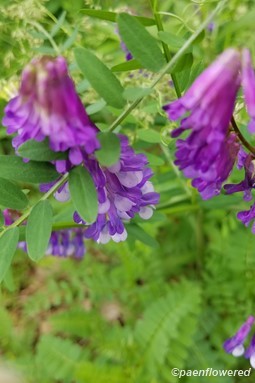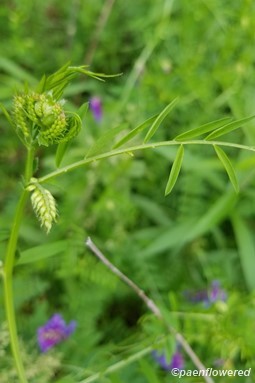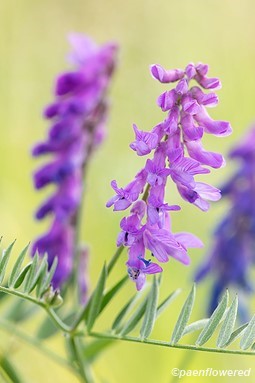Vicia cracca
Naturilized European vetch with blue-violet flowers
Vicia cracca tufted vetch
This plant is a member of the pea family and is an alien import from Eurasia. The abundant pea-like blue-violet flowers are borne on a one-sided spike. The plant is finely downy and has leaves that are compound with 8-12 pairs of leaflets. The end of the leaf terminates in a tendril. Cow vetch grows 2-3 feet high, though it often reclines or climbs on other plants or objects. It grows rapidly and is considered a weed in many areas because it crowds out native plants. On the positive side it has been used as fodder for livestock and does enrich the soil by converting atmospheric nitrogen into soil nitrates. It can also be used to control erosion.
Pet birds such as budgies will eat the seeds or the foliage and it is a good source of nutrients for them. It is also a nectar source for bees. The seedpods are about 2 cm long and resemble those of the commercial pea plant. It can be found in fields, thickets or other disturbed ground from Southern Canada to Georgia and as far west as Illinois. It also grows in the northwestern part of the country and in Hawaii. It even grows in the Canadian Arctic and Greenland. It blooms from May to August. It is also called bird vetch or boreal vetch. A related plant is the hairy vetch, which does not have the smooth stem of cow vetch.
Habitat & Range
Naturalized in fields, roadsies, and floodplains.
Present in most counties of the state.
Range: Southern Canada to Georgia, and as far west as Illionois.
Wetland code: Not classified
Phenology
Flowers May to August.











Comments
Have you spotted this plant in your area? We'd love to hear about your experience! Share your comments or questions about the plant below. Comments are moderated before posting.